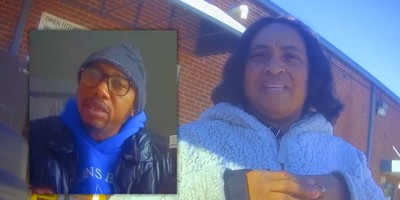There are no high-end retail outlets or chichi restaurants. You don't see pairings of pedestrians enjoying a stroll down the boulevard. "It's not Walnut Creek," Smart N Cleaner owner Namjoo Kim observes.
Thanks to the redevelopment machine -- which Gov. Jerry Brown has tried to defund -- $9 million of Alameda County redevelopment money is being used to turn a small segment of Castro Valley Boulevard into "a beautiful and inviting pedestrian environment" to encourage "shopping, dining and entertainment" on widened sidewalks with benches, trees and gateway markers.
In the process, the Streetscape project is tearing up Castro Valley Boulevard and driving away customers from small businesses struggling to keep their doors open in this down economy. With the street in front of her business torn up, Kim says revenue is down 30 percent -- and "that 30 percent is to us our profit." She fears that longtime customers will find another dry cleaner and never return. And: "We cannot trust the government to work."
At El Burrito Loco, Jorge Poro says the drop-off in customers set him back two months on his rent. Yet from where he sits, the construction isn't a problem now. He has recovered. He feels "positive" about the project.
Redevelopment director Eileen Dalton is aware of the complaints and lost income. She understands that the project comes at a bad time for small businesses. "Even in good times," she says, small businesses find construction painful. "We're doing this project for their benefit. We don't want to have them hate it."
Recommended
It is clear when you listen to Dalton that she wants to make downtown CV nice -- with "the things that people like about Pleasanton and Danville and Lafayette." A lot of residents hope she is right when she says that after all of this is over, "it'll be pretty." Right now, "pretty" is not the way people describe Castro Valley Boulevard.
I start with the view that big redevelopment projects are tax-funded schemes that allow one set of well-heeled bureaucrats to poach business from communities with fewer dollars to throw around. When they're successful, they lure car dealers and retailers to their fiefdoms. When they fail, they end up bankrolling the construction of empty buildings.
Castro Valley Streetscape, however, is in a completely different league. It's a small project. Lifetime resident and local businessman Ken Carbone explains that because Castro Valley is an unincorporated area, "redevelopment is the only resource" from which tax dollars from downtown businesses can be reinvested into the community.
Carbone is sick of watching Castro Valley not spruce itself up -- and besides, he adds, the street had to be torn up for sewer work.
The question is, Can redevelopment funds transform Castro Valley into a quaint venue for pedestrians, diners and shoppers?
Merchants note that Castro Valley consumers place high value on the convenience of being able to pull over in their car and make a quick purchase. Mark Witriol, a co-owner of Pet Food Express, tells me he was "amazed" that the county thinks it can turn Castro Valley, at its density, into a walking town. Lucca's Italian Delicatessen owner Syavash Alaee agrees. "Nobody walks here," he says. His business is down 10 to 20 percent. When Streetscape is done, he expects the street to look better, but not his bottom line.
Some fear that the project will succeed too well. Then what happens to their rent and those enterprises that aren't stylish and upscale?
Others are skeptical of the promise of trendy eateries and tony shops.
Phil Fleig of Sal's Foreign Car expresses the ambivalence other merchants say they feel. He's glad to see tax dollars at work in Castro Valley. When it's over, he says, "it's going to look better, look nice. But what about the old people who aren't going to make it? There are some businesses here that I've talked to that are struggling. So they go away. If they make it, great. If they don't, what about them?"
I wonder just how many upscale downtown destinations planners think they can replicate. There are more than 400 redevelopment agencies in California. Though some projects have cleaned up urban blight, others are -- as the governor argues -- just plain wasteful. Dollars that could have funded schools and cops instead pay to erect new half-empty buildings next to old half-empty buildings. Think downtown Hayward.
And that's the question for Castro Valley Boulevard: Will redevelopment deliver a downtown like Danville's -- or Hayward's?

























Join the conversation as a VIP Member